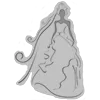La teoría del gobernador central ayuda a entender y controlar la fatiga en el ejercicio
Yo me considero ciclista. Ciclista de siempre. Creo que ser ciclista o no, no tiene nada que ver con competir o no. Conozco a mucha gente, incluido yo, que hace años salía cada día, me cuidaba un montón e iba súper rápido, en cambio como trabajada, no competía tanto. Prefería hacerme un fondo los domingos que ir a una carrera y descansar el sábado.
Pues no lo sé, pero ha sido un camino muy largo. Yo empecé con YouTube hace 4 o 5 años, hablo de memoria, y desde siempre yo he visto que he interesado, pero es verdad que desde la pandemia ha habido un boom brutal que multipliqué por cuatro las visualizaciones.
¿El secreto? yo creo que ser auténtico, entretener y enseñar algo. Pero yo creo que sobre todo el ser auténtico, sin trampa ni cartón. Creo que a la gente le gusta el Zugasti más cercano, tal y como soy, creo que lo que gusta es eso. Pero también hay un trabajo detrás y mucha constancia. No es fácil subir un vídeo cada semana y al final creo que constancia también tiene su premio.
¿Qué vídeo de tu canal tiene más visualizaciones y por qué piensas qué ha tenido tanto éxito? ¿qué vídeos te suelen funcionan mejor en el canal?
Para todos los que nos dedicamos a comunicar está claro que cuantas más visualizaciones mejor. Pero tengo un canal en el que no tengo grandes pelotazos, pero es que cada vídeo es un pelotazo. Tengo una media de visualizaciones muy alta.
Aún así hay dos que se salen de la media; el del muro con Purito en Andorra y la charla con Luis Enrique. Estos están por encima del millón (de visualizaciones) y luego hay bastantes entre 500.000 y 600.000. Hay uno curioso que flipas, es el de la cadena impoluta. Los vídeos de charlas y carreras gustan, pero también la gente, sobre todo en la pandemia, busca el consejo.
En tus vídeos, transmites que para conseguir un buen rendimiento sobre la bici hay que tener casi una vida de monje. ¿Hay algo a lo que hayas tenido que renunciar y que te haya costado hacerlo?
The number of children crossing has also soared
According to Diana Romero, emergency specialist at UNICEF Panamá, one in five migrants crossing the Darién is a child – half of them under the age of five. Although there are no accurate figures, there are many reports of children dying during the trek. The number of unaccompanied children is of particular concern. In 2022, UNICEF assisted about 1,000 unaccompanied minors, but in 2023 that figure reached 3,300. Of those, 67% were teenagers, 21% children aged between 6 and 12, and of the rest, 10% are babies, Romero said. Often, younger children get separated from their relatives during the trek only managing to reunite later on. According to Francisco Pulido, Plan International´s director of humanitarian action and stabilisation in Colombia, teenagers tend to travel in friend groups – often motivated by misinformation shared on social media. In other cases, the entire family cannot afford to continue the trek so parents leave their children in camps, hoping to send them money to follow on later.
Most of the medical cases that aid organisations come across and treat are related to the dangers of the jungle itself, or due to the lack of access to clean water and food en route. There’s no data available, but humanitarian groups say there has also been a rising number of migrants travelling with pre-existing chronic conditions – psychiatric disorders, diabetes, hypertension, or asthma. These people often require emergency assistance because their medications get lost or stolen.
